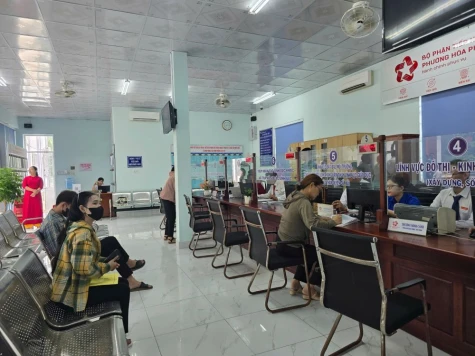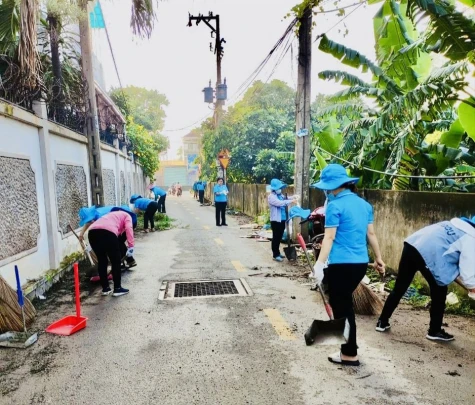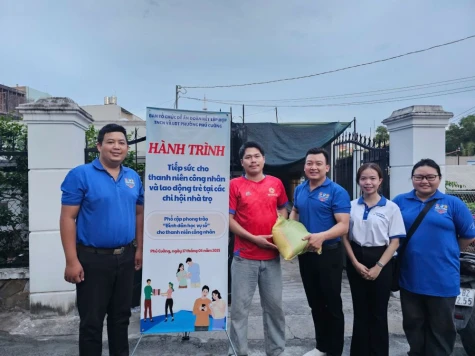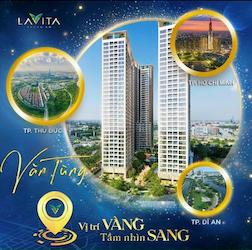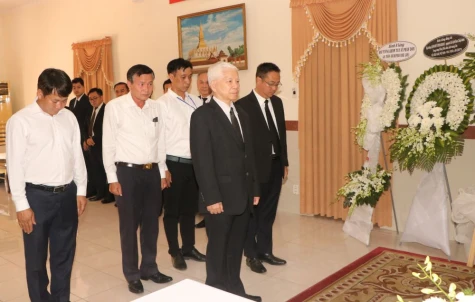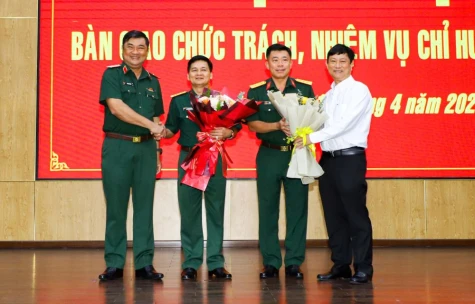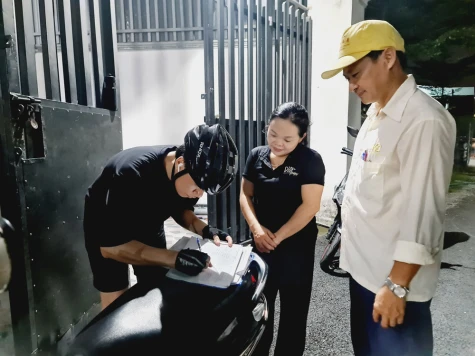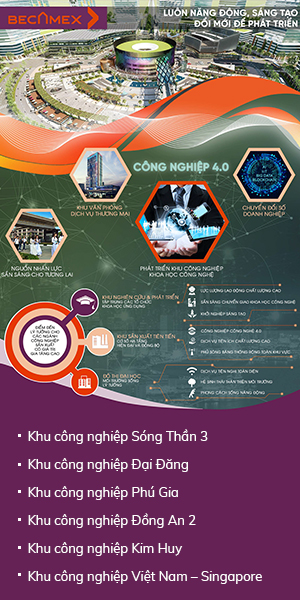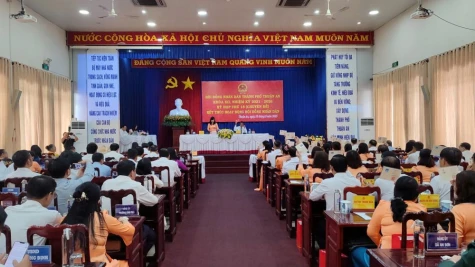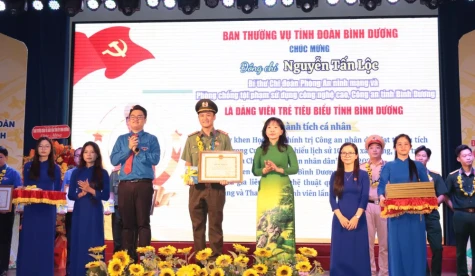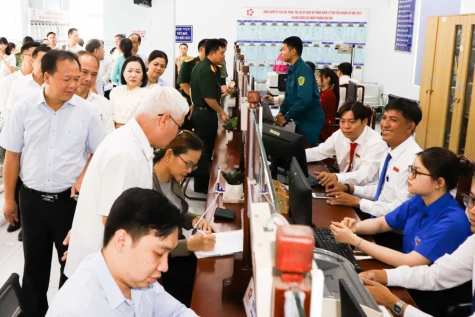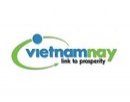These days, North Tan Uyen district, along with the entire nation, is reliving the passionate revolutionary spirit of Vietnam’s historic Ho Chi Minh campaign—the campaign that unified the country and brought the nation together as one. Building on the tradition of the heroic War Zone D, over the past 50 years, North Tan Uyen district has overcome numerous challenges and difficulties, making significant progress and development to reach its full potential.
"As long as War Zone D exists, Saigon will fall"
It was no coincidence that the Saigon puppet government once circulated the saying: "As long as War Zone D stands, Saigon will fall”. War Zone D was a revolutionary stronghold, a strategic defensive zone connecting multiple battlefronts and a crucial bridge linking the major northern rear base with the southern battlefield.

Nguyen Thanh Tam, from the Traditional Liaison Committee of Brigade B90-C200-C270 under the Truong Son - Ho Chi Minh Trail Tradition Association in Binh Duong province shared: "War Zone D" was the name given to a revolutionary base established in late February 1946. When the French colonialists occupied Tan Uyen district and established a military sub-zone, the Headquarters of Military Zone 7 and the armed forces of Bien Hoa and Thu Dau Mot retreated deep into the forest. From then on, War Zone D became the base of War Zone 7 - an administrative-military organization of the provinces of Thu Dau Mot, Bien Hoa, Tay Ninh, Gia Dinh, Cho Lon, Ba Ria and Saigon, with Lieutenant General Nguyen Binh appointed as the Chief of the Zone and Tran Xuan Do as the Political Commissioner of the Zone. Initially, War Zone D was the code name for the headquarters of Zone 7 located in the system of base locations of the Zone. Gradually, the code name D was used to refer to the entire large war zone that was increasingly developing in the Southeastern region.
During the nine-year resistance against the French, War Zone D was established in February 1946, initially centered around five key communes: Tan Hoa, My Loc, Tan Tich, Thuong Lang and Lac An, all located in Tan Uyen district, Bien Hoa province. From 1948 onward, War Zone D expanded further, developing towards the northern and northeastern regions. However, its core area remained within the following boundaries: For the west, it bordered the route 16, stretching from Tan Uyen town to Cong Xanh; For the north, it was bounded by the Be River, from Phuoc Hoa bridge to Chanh Hung; For the east, it continued along the Be River from Chanh Hung to the Hieu Liem junction and for the south, it was bordered by the Dong Nai River, from the Hieu Liem junction back to Tan Uyen town.
During the resistance war against the U.S., due to the scale and nature of the conflict, the central base gradually shifted northeast from its original location, which was primarily within Tan Uyen area. By early 1975, the base was fully established, reaching its largest extent. The entire stronghold was located north of the Dong Nai River, bordered to the west by the former Binh Long and Phuoc Long provinces, to the north by the Vietnam-Cambodia border and to the east by the present provinces of Binh Duong, Binh Phuoc and Dak Lak, extending into the Cat Tien forest near the upper reaches of the Dong Nai River on its right bank.
"War Zon D stands as a symbol of the resistance war, embodying the willpower and spiritual strength of the entire nation. It was a source of hope and faith for all officers, soldiers and people in the Southeastern region", said Nguyen Thanh Tam.
Fifty years passed. The war receded into the past, but the achievements of a fierce time of bombs and bullets are still imprinted in the minds of those who lived and fought on this sacred land. How many times the enemy swept through savagely, many families were destroyed, many houses were built and then burned down again and again...
The old battlefield blooms, bearing fruits
Following the traditions of previous generations from the historic revolutionary region, the Party, government and people of North Tan Uyen today continue promoting the traditions of unity, solidarity, dynamism and creativity, overcoming all challenges and striving to achieve important milestones. North Tan Uyen has a rapid urbanization pace and a synchronous traffic infrastructure system. The economy of the district has developed into two relatively harmonious growth areas of industrial and agricultural production.
With the advantage of being located near the Be River and Dong Nai River, areas with suitable geology, soil and climate for growing citrus fruits, the specialized fruit-growing regions in North Tan Uyen have been highly productive and economically effective since 2010. In 2024, agricultural production value reached VND 2.29 trillion. With nearly 2,000 hectares dedicated to citrus fruit cultivation, North Tan Uyen is now one of the leading areas in the province for citrus fruit yield and quality. Oranges, grapefruits and tangerines have not only provided a significant source of income for farmers in the province in recent years, but also become agricultural products known for their delicious, sweet, clean and safe qualities from the land of Binh Duong.
Looking back 11 years ago, North Tan Uyen was established by splitting from Tan Uyen district. At that time, North Tan Uyen had a relatively low starting point in terms of socio-economic development compared to other areas in the province. However, upholding its heroic revolutionary traditions, along with the resilience, hard work and self-reliance of the "hard-but- brave Eastern region", the Party, government and people of North Tan Uyen have always maintained the spirit of unity, solidarity and high determination in their actions. They have gradually progressed from backward agricultural production to clean agriculture, applying advanced technology that not only meets domestic consumption needs, but also shifts toward exporting to international markets. At the same time, along with agricultural production, the district's industrial production has also been continuously developing, with large-scale industrial parks and compounds being built in a modern, environmentally friendly manner, which are now being formed and will continuing develop.
With the glorious tradition of the heroic and resilient War Zone D, the Party, government and people of North Tan Uyen district will continue building on their strengths and achievements, proactively seize opportunities for development and work towards developing North Tan Uyen into an increasingly prosperous, civilized and modern district, ensuring that the lives of locals become more prosperous and truly happy.
Following the traditions of previous generations from the historic revolutionary region, the Party, government and people of North Tan Uyen today continue promoting traditions of unity, solidarity, dynamism and creativity, overcoming all challenges and striving to achieve important milestones. North Tan Uyen has a rapid urbanization pace and a synchronous traffic infrastructure system. The economy of the district has developed into two relatively harmonious growth areas of industrial and agricultural production.
Reported by Thu Thao-Phuong Thanh-Translated by Kim Tin








